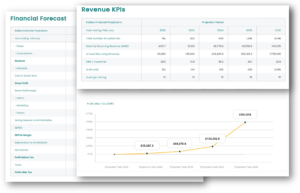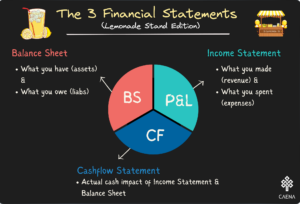Understanding unit economics and top metrics key to startup success
“If we don’t fix this, we are going to die.” Over the past few months, investors are now keen on analysis and unit economics in ways they have not been with ten years of easy money. But now the party is over and founders need to be ready for the scrutiny.
In The Founders, Jimmy Soni’s recent book on the so called “PayPal mafia”, Roelof Botha, then PayPal’s CFO and now Partner and Global Head at Sequoia recalls building a bottoms-up financial model to better understand the metrics and drivers of the business.
While reconciling actual results to financial model assumptions, Botha discovered PayPal was losing millions of dollars a month from fraud and went on to save the company from the threat of bankruptcy. It is not surprising that the failure rate for startups is extremely high, there are so many uncertainties and challenges to overcome especially at the early stages of the business.
PayPal had the benefit of millions of dollars in funding from wealthy founders and some of the world’s most prominent venture firms to help weather the storm of losses from fraud. For most founders and startups, the margins of error are much slimmer, and any single misstep could sink the ship.
Bill is without doubt one of the smartest people I know and always worth listening to. Most people dramatically underestimate the remarkableness of this bull run. Such things are unstoppable … until they aren’t. Markets teach. The lessons can be painful. https://t.co/4DjgEvr0tg
— Jeff Bezos (@JeffBezos) April 30, 2022
One way to mitigate the risk of failure is proper financial planning. Over the past one month, market sentiment has shifted from growth at all costs to survival and building sustainable businesses. Valuation has taken a back seat and suddenly, everyone is talking about two related metrics – burn rate and runway.
What are these metrics? Why does it seem everyone is talking about them? What are the other metrics that are important for building, long term sustainable businesses? Read on for answers to these and more.
Burn rate and runway
Your burn rate also referred to as cash burn simply tells you how fast your startup is using up cash reserves. Monitoring the burn rate is essential to survival for any startup. It is also a great tool for decision making.
A company’s gross burn is the total amount of operating costs it incurs in expenses each month. A company’s net burn is the total amount of money a company loses each month.
Your burn rate helps calculate your cash runway (how long you have until you’re out of business) and determine whether you should slash spending or invest more, such as in marketing, hiring, or development. As a startup, you must keep a keen eye on your burn rate. Watch with a keen eye for fluctuations which might indicate unexpected expenses.
Its ‘sister’ metric – runway is related to burn rate but is a more explicit reflection of the health of a company. Often displayed in months, it is very clear. 3 months runway = at current burn rate and without any change to cash in or out, your company is dead in 3 months.
It is relatively straightforward estimating historical burn rate.
Burn Rate = (Ending Cash Balance – Opening Cash Balance) / (# Months)
Calculating the arguably more important future burn rate and runway requires full suite of financial modelling assumptions around revenue and costs. An in-house CFO or specialised software comes in handy here.
Customer acquisition cost (CAC) and lifetime value (LTV)
Because the purpose of business is to create a customer, the business enterprise has two–and only two–basic functions: marketing and innovation. Marketing and innovation produce results; all the rest are costs. Marketing is the distinguishing, unique function of the business. – Peter Drucker
Every successful company finds a way to acquire and retain customers profitably. A lot of focus is usually on the first part of that equation with most founders forgetting that customer acquisition has to be done profitably.
CAC is one of the metrics (the other being LTV) that measures how profitable a company’s marketing activities are and they have to be read together to make the most sense.
CAC is a measure of the costs incurred in acquiring each individual customer. CAC = Cost of Sales + Cost of Marketing / New Customers Acquired.
Attracting leads, converting them to paying customers and keeping them on for a long period is often unprofitable in the beginning. Therefore monitoring your CAC is a good discipline as it helps in choosing which marketing channels or customer segments to stick with and which to dispense with if they are too expensive.
Forward-looking CAC and LTV figures can be tricky as well as they depend on what assumptions you have in your financial model. It is important for startup founders not to overcomplicate matters. Be thorough but keep things simple, there’s no point spending loads of money trying to get to 100% accuracy when 80% would do
Retention rate
Don’t get obsessed only with getting new customers. You need to keep the few you already have onboard content. They’re keeping your startup afloat, after all. Nurture them. Pay attention to their needs. Don’t let them feel abandoned. Otherwise, you may find they will jump ship.
To help motivate you, and to understand just how important this metric is, think about your CAC and how much it costs you to bring on new customers. If you don’t focus your attention on the precious few customers you already have, you’re going to hurt your profits too soon.
Active users
Active users are, as it sounds, customers who actively use your product. This valuable metric is often tracked by businesses as daily active users (DAU) and monthly active users (MAU). This metric allows you to, a bit like God, look over and see how many people are engaging with your creation. It allows you to gauge product stickiness.
The growth rate of a startup is a vital metric when measured by revenue and in the absence of revenue metrics, active users will be your best proxy. Active users, as opposed to total users, gives you a clear picture of how many people use your product. This makes it an especially important metric for startups.
Average sales cycle length
Do your potentials have to jump through hoops before being initiated from lead to customer? If the answer is yes, not good. Your sales cycle length measures how much time it takes to initiate a sales contract to close a deal. If you see long measurement times or dramatic shifts in the length of time (going upward), then it may indicate a problem in the sales process.
This metric differs between different types of products and companies. Ecommerce or retail, for example, will have shorter sales cycles than say, a SaaS company. After calculating your average sales cycle length, check and compare yours with industry benchmarks. You will get an understanding of where you are, if you’ve got problems, and if you need to improve your sales process.
It’s worth mentioning, however, that as a startup, this metric should shorten over time as you grow more successful. As your startup grows, your sales team grows, and you work on finessing your sales process, the average sales cycle length should shorten without much effort.
Operating cashflow
Operating cash flow is an important measure of a company’s financial health, as it shows how much cash the company is generating from its core business operations and can be used to pay for things like new investments or debt obligations.
Operating cash flow is simply a measurement of the cash a business generates from normal operations. Very importantly, this metric excludes any cash related to finance activities such as equity / debt or cash related to investment activities such as capex.
Operating cash flow = Cash from sales MINUS cash from operating expenses (COGS + SG&A + Net Interest +Taxes)
Note that the calculation relates to cash inflows / outflows and not accounting recognition.
Calculating your metrics with Caena financial modelling tool

Caena enables startups measure the metrics that matter to them quickly and without breaking the bank. With our financial modelling tool for startups, you can generate metrics that matter to your business including burnrate, runway, CAC, LTV, retention and lots more.
Sign up for free and set your business up for success.





